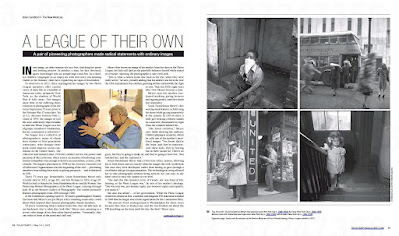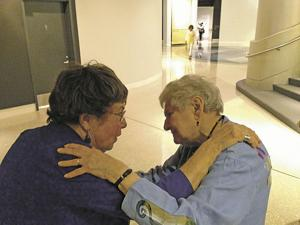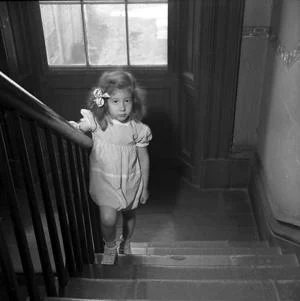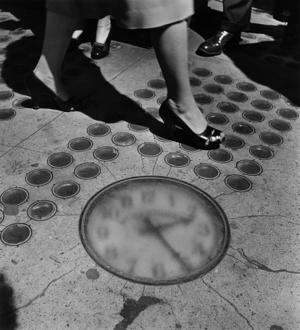December 30, 2023
Central Park, View from Essex House, NYC, Day To Night ™ © Stephen Wilkes. Courtesy MTA Arts & Design."Day to Night" explores the circadian rhythms of New York's iconic landmarks and vibrant city life
The ongoing “Day to Night” series explores the temporal and circadian rhythms of daily life in landmark locations from around the world. Working from a fixed camera angle, Wilkes takes up to 1,500 images over the course of a day then edits the best moments of the entire day, using time as his guide. These select moments are then digitally blended into a single photograph.
The photos on display at Grand Central Madison were chosen by MTA Arts & Design and the artist to reveal a range of New York City views, including the bustling landscapes of Rockefeller Center during the holidays, Central Park in its colorful fall glory, and Coney Island at the peak of summer. Together, these images serve as a lasting reminder of the energetic environs, both natural and human-made, that make New York City such a lively place to spend time. The exhibition is curated by MTA Arts & Design and generously sponsored by Duggal Visual Solutions with installation support by OUTFRONT Media. The photographs will be on view until Spring 2024.
“It is so special for me to share these New York ‘Day to Night’ images within the stunning Grand Central Madison cultural corridor. New York has always been a source of great inspiration and my ‘Day to Night’ project began as a love letter to New York City. I was drawn to photograph the most iconic locations within the city, views that are part of our collective memory, but seen in a totally different light. I photograph from locations and views that are part of our collective memory,” said Westport, Connecticut-based artist Stephen Wilkes. “I capture what I see, the fleeting moments of humanity and light as time passes. Photographing a single place for up to 36 hours becomes a meditation. It has informed me in a unique way, inspiring deep insights into the narrative story of life, and the fragile interaction of humanity within our natural world.”
Located at the south end of the concourse by the 42nd Street entrance, MTA Arts & Design Photography at Grand Central Madison was inaugurated in 2023. The curated exhibition series is installed in ten large-scale lightboxes and rotated periodically. The Photography initiative is part of the larger Grand Central Madison “cultural corridor,” a new venue for artistic expression curated by MTA Arts & Design. In addition to temporary photography exhibitions, the corridor includes lively permanent mosaic commissions by Yayoi Kusama and Kiki Smith and five large LED screens that display a widerange of temporary digital artworks from the MTA Arts & Design Digital Art Program, an annual open call initiative for digital artists. Taken together, these unique and publicly accessible artistic endeavors are a reminder of the enduring power of public art and its ability to connect people from all walks of life.
STEPHEN WILKES
Stephen Wilkes was born in 1957 in New York. He received his BS in photography from Syracuse University S.I. Newhouse School of Public Communications with a minor in business management from the Whitman School of Management in 1980. Wilkes’ extensive awards and honors include the Alfred Eisenstaedt Award for Magazine Photography, Photographer of the Year from Adweek Magazine, Fine Art Photographer of the Year 2004 Lucie Award, TIME Magazine Top 10 Photographs of 2012, Sony World Photography Professional Award 2012, Adobe Breakthrough Photography Award 2012 and Prix Pictet, Consumption 2014. His photographs are included in the collections of the George Eastman Museum, James A. Michener Art Museum, Houston Museum of Fine Arts, Dow Jones Collection, Carl & Marilynn Thoma Art Foundation, Jewish Museum of NY, Library of Congress, Snite Museum of Art, The Historic New Orleans Collection, Museum of the City of New York, 9/11 Memorial Museum and numerous private collections. His editorial work has appeared in, and on the covers of leading publications such as the New York Times Magazine, Vanity Fair, Time, Fortune, National Geographic, Sports Illustrated, and many others.
MTA ARTS & DESIGN MTA
Arts & Design encourages the use of public transportation by providing visual and performing arts in the metropolitan New York area. The Percent for Art program is one of the largest and most diverse collections of site-specific public art in the world, with more than 380 commissions by world-famous, midcareer and emerging artists. Arts & Design produces Graphic Arts, Digital Art, photographic Lightbox exhibitions, as well as live musical performances in stations through its Music Under New York (MUSIC) program, and the Poetry in Motion program in collaboration with the Poetry Society of America. It serves the millions of people who rely upon MTA subways and commuter trains and strives to create meaningful connections between sites, neighborhoods, and people.
MTA
















